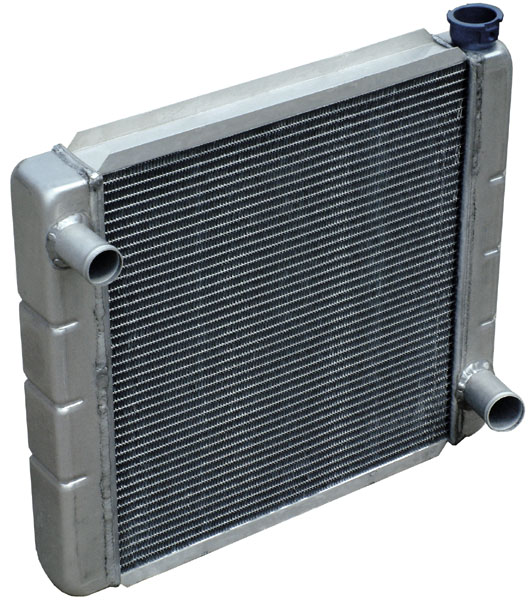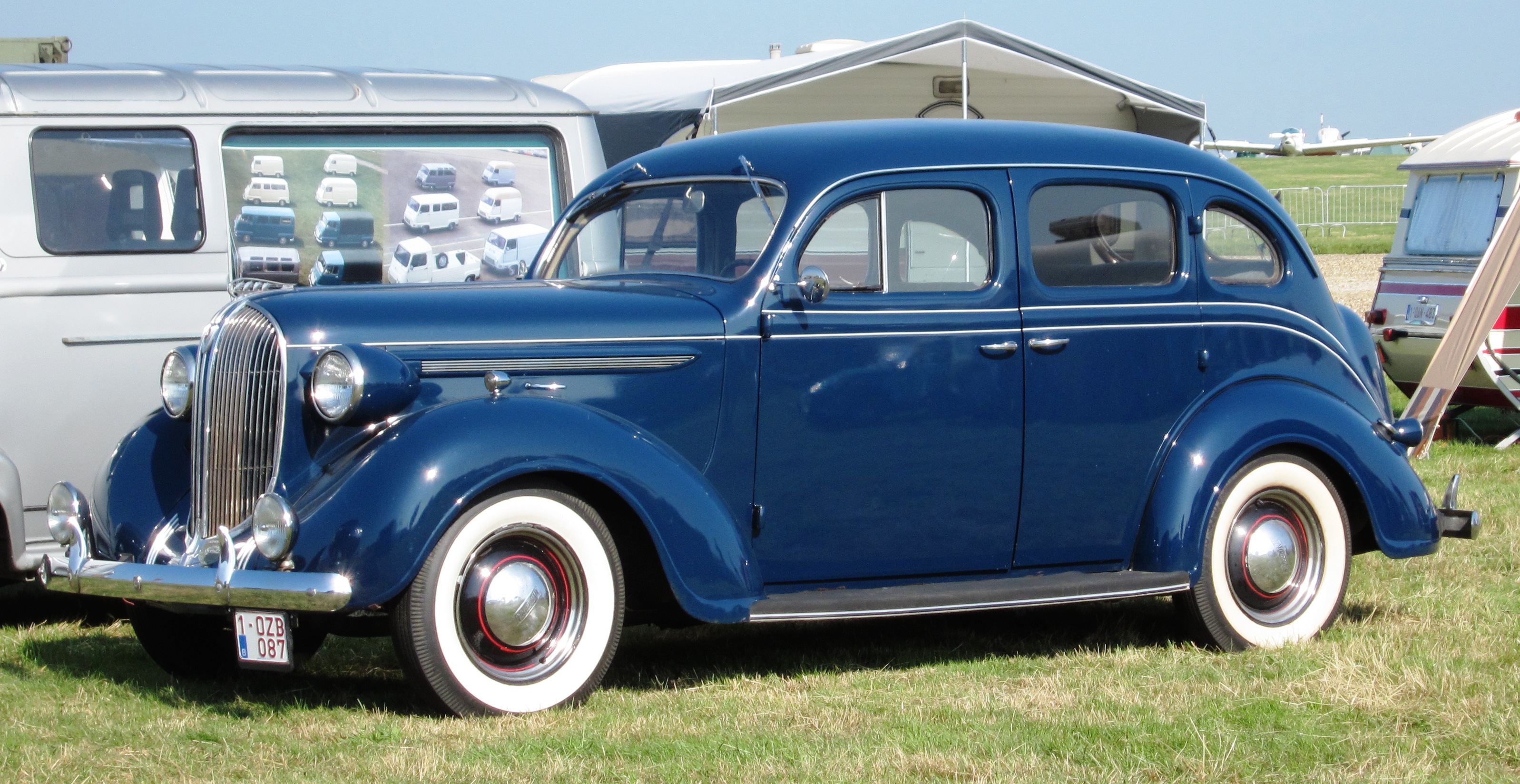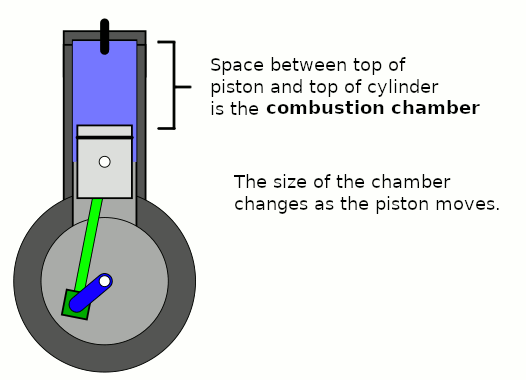|
Polyspheric Engine
The Polyspheric engines were V8 engines produced by Chrysler from 1955 to 1958 as lower-cost alternatives to its Chrysler FirePower engine, ''Hemi'' engines. These engines were based on the ''Hemi'' engines, using the same engine block, blocks and crankshaft parts, but completely different cylinder heads, pushrods, exhaust manifolds and pistons. They were called ''Polyspheric'' or ''Poly'' engines, because they featured polyspherical-shaped (meaning "more than one sphere") combustion chambers. These were formed by two shallow concave domes where the intake and exhaust valve seats were. Because these engines needed a less sophisticated rocker arm, rocker setup than a true hemi, with only a single rocker shaft in each head, they were also cheaper to produce and lighter. In the Chrysler literature, the ''Poly'' engines were also called ''single rocker shaft'' (SRS), while the ''Hemi'' engines were called ''dual rocker shaft'' (DRS). These engines replaced Chrysler's Chrysler_flat ... [...More Info...] [...Related Items...] OR: [Wikipedia] [Google] [Baidu] |
Chrysler
FCA US, LLC, Trade name, doing business as Stellantis North America and known historically as Chrysler ( ), is one of the "Big Three (automobile manufacturers), Big Three" automobile manufacturers in the United States, headquartered in Auburn Hills, Michigan. It is the American subsidiary of the multinational automotive company Stellantis. Stellantis North America sells vehicles worldwide under the Chrysler (brand), Chrysler, Dodge, Jeep, and Ram Trucks nameplates. It also includes Mopar, its automotive parts and accessories division, and Street and Racing Technology, SRT, its performance automobile division. The division also distributes Alfa Romeo, Fiat, and Maserati vehicles in North America. The original Chrysler Corporation was founded in 1925 by Walter Chrysler from the remains of the Maxwell Motor Company. In 1998, it merged with Daimler AG, Daimler-Benz, which renamed itself DaimlerChrysler but in 2007 sold off its Chrysler stake. The company operated as Chrysler LLC thr ... [...More Info...] [...Related Items...] OR: [Wikipedia] [Google] [Baidu] |
Radiator (engine Cooling)
Radiators are heat exchangers used for cooling internal combustion engines, mainly in automobiles but also in piston-engined aircraft, railway locomotives, motorcycles, stationary generating plants or any similar use of such an engine. Internal combustion engines are often cooled by circulating a liquid called '' engine coolant'' through the engine block and cylinder head where it is heated, then through a radiator where it loses heat to the atmosphere, and then returned to the engine. Engine coolant is usually water-based, but may also be oil. It is common to employ a water pump to force the engine coolant to circulate, and also for an axial fan to force air through the radiator. Automobiles and motorcycles In automobiles and motorcycles with a liquid-cooled internal combustion engine, a radiator is connected to channels running through the engine and cylinder head, through which a liquid ( coolant) is pumped by a coolant pump. This liquid may be water (in climates ... [...More Info...] [...Related Items...] OR: [Wikipedia] [Google] [Baidu] |
Chrysler Windsor
The Chrysler Windsor is a full-size car which was built by Chrysler (division), Chrysler from 1939 through to the 1960s. The final Chrysler Windsor sold in the United States was produced in 1961, but production in Canada continued until 1966. The Canadian 1961 to 1966 Windsor model was for all intents and purposes the equivalent of the Chrysler Newport in the United States. The Windsor was almost identical to the more luxurious Chrysler New Yorker in terms of size, interior and standard features except that it was only available with the Chrysler flathead engine#Straight-6, Chrysler Straight Six that originally started the company in 1925, which offered customers a luxurious car with a more modest and economic engine. As the years progressed and technology and manufacturing costs improved, the Windsor offered items that were initially optional as standard equipment while maintaining a market position lower in the Chrysler product hierarchy. The Windsor was mechanically similar to ... [...More Info...] [...Related Items...] OR: [Wikipedia] [Google] [Baidu] |
Chrysler Saratoga
The Chrysler Saratoga is an automobile built by Chrysler. The nameplate was used from 1939 to 1952 and from 1957 to 1960 in the U.S. market, in Canada through 1965, and in Europe from 1989 to 1995. In the beginning, it was introduced as a sport luxury model, using the Straight Eight engine from the Chrysler New Yorker which was more formal, and the Imperial which had graduated to special order limousine. The Saratoga was introduced one year after the luxurious New Yorker and was well equipped, wearing the Chrysler nameplate. It was initially more expensive than the New Yorker, then marketing changes repositioned the Saratoga more modestly as the Imperial took the top of the Chrysler hierarchy followed by the New Yorker. Items that were standard equipment such as power windows, power locks, power steering, power brakes, power adjustable front seat and air conditioning on the New Yorker were initially available on the Saratoga, then as years progressed became standard on the Saratog ... [...More Info...] [...Related Items...] OR: [Wikipedia] [Google] [Baidu] |
Chrysler Hemi Engine
The Chrysler Hemi engine, known by the trademark Hemi or HEMI, refers to a series of high-performance American overhead valve V8 engines built by Chrysler with hemispherical combustion chambers. Three generations have been produced: the FirePower series (with displacements from to ) from 1951 to 1958; a famed race and street engine from 1964-1971; and family of advanced Hemis (displacing between since 2003. Although Chrysler is most identified with the use of "Hemi" as a marketing term, many other auto manufacturers have incorporated similar cylinder head designs. The engine block and cylinder heads were cast and manufactured at Indianapolis Foundry. During the 1970s and 1980s, Chrysler also applied the term ''Hemi'' to their Australian-made Hemi-6 Engine, and a 4-cylinder Mitsubishi 2.6L engine installed in various North American market vehicles. Design The main advantage of a hemi head engine over other head designs is power. In return, hemi head engines tend to ... [...More Info...] [...Related Items...] OR: [Wikipedia] [Google] [Baidu] |
Plymouth (automobile)
Plymouth was a brand of automobiles produced by Chrysler, Chrysler Corporation and its successor Mercedes-Benz Group, DaimlerChrysler. The brand was launched in 1928 to compete in what was then described as the "low-priced" market segment that was dominated by Chevrolet and Ford Motor Company, Ford. It became a high-volume seller for the automaker until the late 1990s. Plymouth cars were marketed primarily in the United States. The brand was withdrawn from the marketplace in 2001. The Plymouth models that were produced up until then were either discontinued or rebranded as Chrysler or Dodge. History Origins The Plymouth automobile was introduced at Madison Square Garden (1925), Madison Square Garden on July 7, 1928. It was Chrysler Corporation's first entry in the low-priced field previously dominated by Chevrolet and Ford. Plymouths were initially priced higher than the competition, but offered standard features such as internal expanding hydraulic brakes that Ford and Chevr ... [...More Info...] [...Related Items...] OR: [Wikipedia] [Google] [Baidu] |
Rocker Arm
A rocker arm is a valvetrain component that typically transfers the motion of a pushrod in an overhead valve engine, overhead valve internal combustion engine to the corresponding intake/exhaust poppet valve, valve. Rocker arms in automobiles are typically made from stamped steel, or aluminum in higher-revving applications. Some rocker arms (called ''roller rockers'') include a bearing at the contact point, to reduce wear and friction there. Overview The most common use of a rocker arm is to transfer the up and down motion of a pushrod in an overhead valve engine, overhead valve (OHV) internal combustion engine to the corresponding intake/exhaust poppet valve, valve. In an OHV engine the camshaft located within the engine block below the cylinder bank(s) pushes the pushrod upwards. The top of the pushrod presses upwards on one side of the rocker arm located at the top of the cylinder head, which causes the rocker arm to pivot downward on the top of the valve, opening it. To redu ... [...More Info...] [...Related Items...] OR: [Wikipedia] [Google] [Baidu] |
Combustion Chamber
A combustion chamber is part of an internal combustion engine in which the air–fuel ratio, fuel/air mix is burned. For steam engines, the term has also been used for an extension of the Firebox (steam engine), firebox which is used to allow a more complete combustion process. Internal combustion engines In an internal combustion engine, the pressure caused by the burning air/fuel mixture applies direct force to part of the engine (e.g. for a piston engine, the force is applied to the top of the piston), which converts the gas pressure into mechanical energy (often in the form of a rotating output shaft). This contrasts an external combustion engine, where the combustion takes place in a separate part of the engine to where the gas pressure is converted into mechanical energy. Spark-ignition engines In spark ignition engines, such as petrol engine, petrol (gasoline) engines, the combustion chamber is usually located in the cylinder head. The engines are often designed such ... [...More Info...] [...Related Items...] OR: [Wikipedia] [Google] [Baidu] |
Cylinder Head
In a piston engine, the cylinder head sits above the cylinders, forming the roof of the combustion chamber. In sidevalve engines the head is a simple plate of metal containing the spark plugs and possibly heat dissipation fins. In more modern overhead valve and overhead camshaft engines, the head is a more complicated metal block that also contains the inlet and exhaust passages, and often coolant passages, valvetrain components, and fuel injectors. Number of cylinder heads A piston engine typically has one cylinder head per bank of cylinders. Most modern engines with a "straight" (inline) layout today use a single cylinder head that serves all the cylinders. Engines with a "V" layout or "flat" layout typically use two cylinder heads (one for each cylinder bank), however a small number of 'narrow-angle' V engines (such as the Volkswagen VR5 and VR6 engines) use a single cylinder head spanning the two banks. Most radial engines have one head for each cylind ... [...More Info...] [...Related Items...] OR: [Wikipedia] [Google] [Baidu] |
Engine Block
In an internal combustion engine, the engine block is the structure that contains the cylinders and other components. The engine block in an early automotive engine consisted of just the cylinder block, to which a separate crankcase was attached. Modern engine blocks typically have the crankcase integrated with the cylinder block as a single component. Engine blocks often also include elements such as coolant passages and oil galleries. The term "cylinder block" is often used interchangeably with "engine block". However, technically, the block of a modern engine (i.e., multiple cylinders integrated with another component) would be classified as a monobloc. __TOC__ Construction The main structure of an engine typically consists of the cylinders, coolant passages, oil galleries, crankcase, and cylinder head(s). The first production engines of the 1880s to 1920s usually used separate components for each element, which were bolted together during engine assembly. Modern en ... [...More Info...] [...Related Items...] OR: [Wikipedia] [Google] [Baidu] |
Chrysler FirePower Engine
The Chrysler Hemi engine, known by the trademark Hemi or HEMI, refers to a series of high-performance American overhead valve V8 engines built by Chrysler with hemispherical combustion chambers. Three generations have been produced: the FirePower series (with displacements from to ) from 1951 to 1958; a famed race and street engine from 1964-1971; and family of advanced Hemis (displacing between since 2003. Although Chrysler is most identified with the use of "Hemi" as a marketing term, many other auto manufacturers have incorporated similar cylinder head designs. The engine block and cylinder heads were cast and manufactured at Indianapolis Foundry. During the 1970s and 1980s, Chrysler also applied the term ''Hemi'' to their Australian-made Hemi-6 Engine, and a 4-cylinder Mitsubishi 2.6L engine installed in various North American market vehicles. Design The main advantage of a hemi head engine over other head designs is power. In return, hemi head engines tend to ... [...More Info...] [...Related Items...] OR: [Wikipedia] [Google] [Baidu] |
Wet Sump
Within piston engines, a wet sump is part of a lubrication system whereby the crankcase sump is used as an integral oil reservoir. An alternative system is the dry sump, whereby oil is pumped from a shallow sump into an external reservoir.Wet sump and dry sump compared - https://www.knowyourparts.com/technical-resources/engine/oil-system-differences/#:~:text=Dry%20Oil%20Systems%20Wet%20sump%20systems%20store%20the,is%20used%20to%20pump%20oil%20from%20the%20motor. Piston engines are lubricated by oil which is pumped into various bearings, and thereafter allowed to drain to the base of the engine under gravity. In most production automobiles and motorcycles, which use a wet sump system, the oil is collected in a capacity pan at the base of the engine, known as the sump or oil pan, where it is pumped back up to the bearings by the internal oil pump. A wet sump offers the advantage of a simple design, using a single pump and no external reservoir. Since the sump is internal, t ... [...More Info...] [...Related Items...] OR: [Wikipedia] [Google] [Baidu] |





